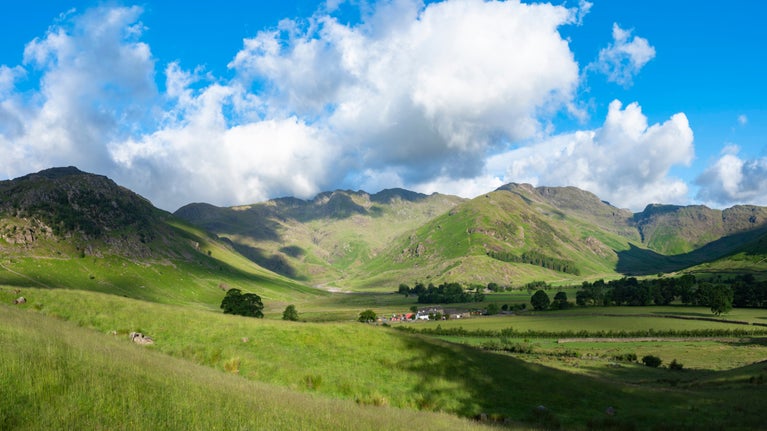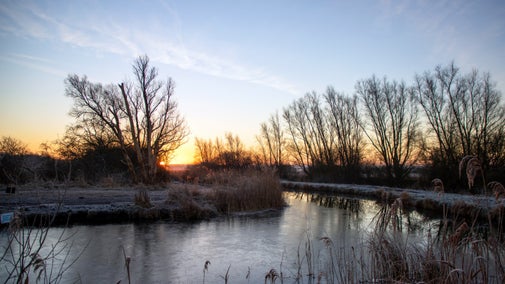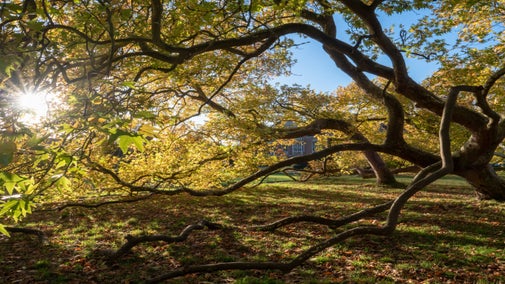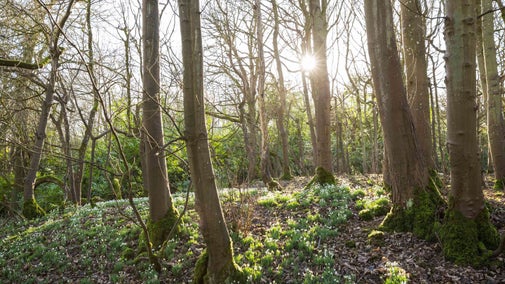
Nature conservation
From ancient trees to bees and butterflies, our places are full of life. We're working hard to safeguard nature for years to come.

The National Trust is one of the most important organisations in the UK for native bluebell conservation. A quarter of the woodland in our care is ancient or semi-natural – the ideal habitat for English bluebells. Find out what we're doing to look after the UK’s native bluebell population, and how you can help us to protect this much-loved wild flower.
Bluebells are an essential part of our natural heritage. Almost half the world's bluebells are found in the UK and colonies of this delicate wild flower take a long time to establish – around five to seven years from seed to bloom. They're considered so important that they're a protected species in the UK. It's against the law to intentionally pick, uproot or destroy bluebells.
Bluebells have soft, succulent leaves that are particularly sensitive to being trodden on. Once the leaves are damaged, they are unable to absorb the sun and photosynthesise, so they die back. In turn, this means they can’t put food back into their bulbs, reducing their ability to produce flowers and seeds.
When we see bluebells in full bloom, it can be so tempting to step into the middle of the colourful carpet to take the perfect photo. But trampling on these delicate flowers causes them long-lasting damage.
Unfortunately, if one person walks on the bluebells, this encourages more people to do it too. In popular bluebell woods, narrow tracks made by one person soon become wider as more people walk the same route. The bluebells then end up in island-like patches instead of the blue carpet we all love.
The bulbs also become damaged when the soil is compacted from the weight of persistent footfall.

In the most popular bluebell areas we care for, we've taken decisive measures to control the number of visitors and the flow of people as they walk along the route. Establishing clearly marked paths for visitors to walk along means that we can all enjoy the bluebells now, while still preserving the flowers for future generations.
We want everyone to enjoy the springtime spectacle of bluebells in bloom. You can help us to protect them by following our guidance:

From ancient trees to bees and butterflies, our places are full of life. We're working hard to safeguard nature for years to come.
Discover how the native British bluebell differs from the Spanish variety, and find out how this wild flower has been used in medicines and inspired storytellers for centuries.

Hedgerows and orchards provide food for insects, homes for wildlife and a spectacle of spring blossom for humans. However, they are disappearing from UK landscapes. Find out more about what we're doing to bring blossoming trees and hedgerows back.
Discover what we're doing to conserve and protect the plants in gardens across the country, and see some examples of the most special plants and trees.

Discover some of the best places to see bluebells in the UK, including paths through ancient woodlands, walks in lush valleys and trails around nature reserves.

Reducing carbon emissions, planting trees and protecting wildlife habitats: just some of the things we’re doing to protect nature and the climate.

Discover the world of trees and plants across the 25,000 hectares of woodland, 135 landscape sites and more than 200 gardens in National Trust care.

Plan a visit to one of the special countryside places in our care and discover the benefits of being in the great outdoors. Pack your walking boots and get ready to explore woodlands, valleys and rivers.

Discover the stories behind some famous British wild flowers and how wildflower meadows support important species from butterflies to bees.
